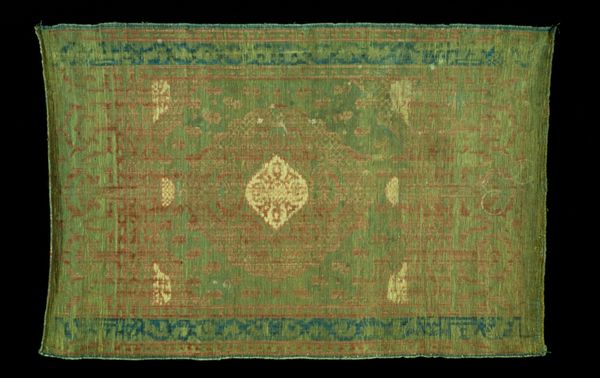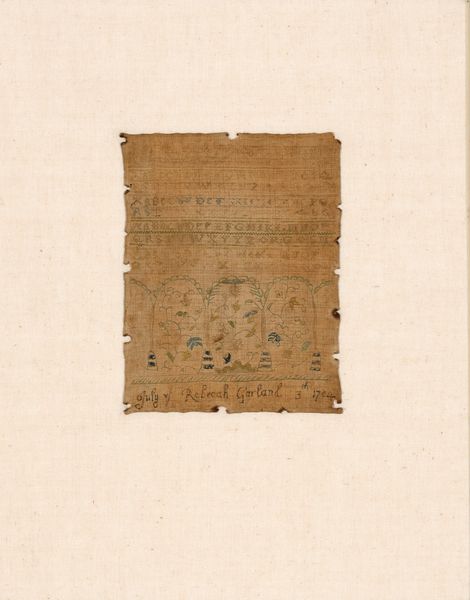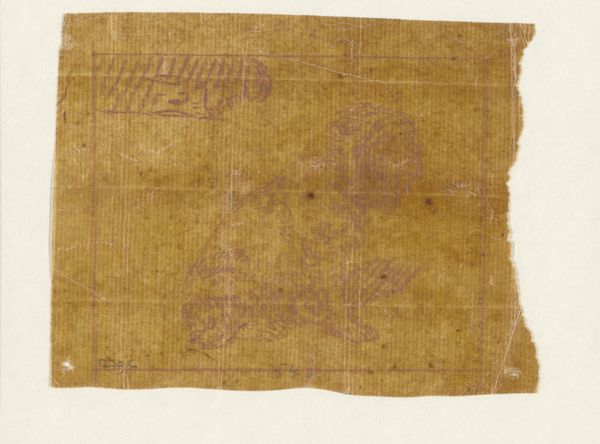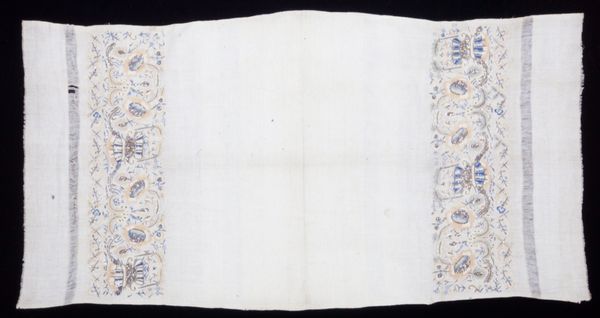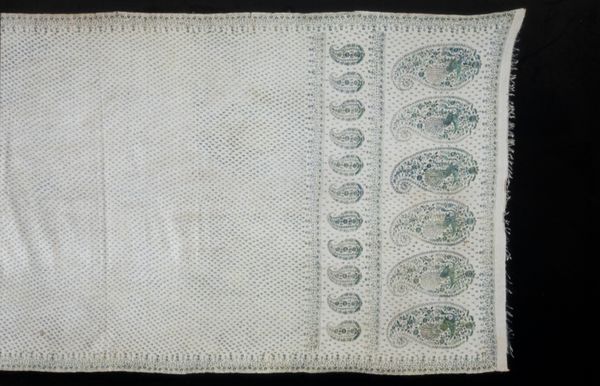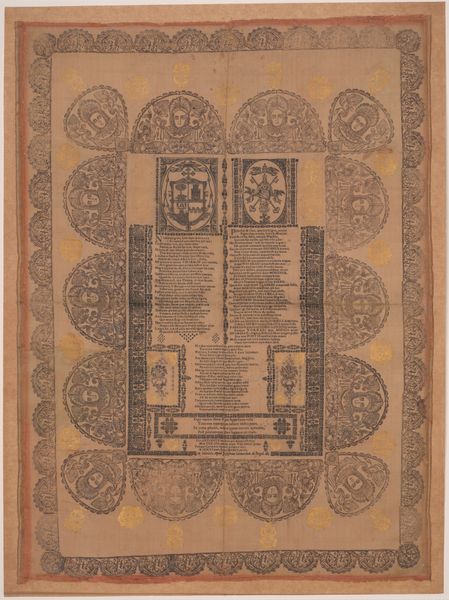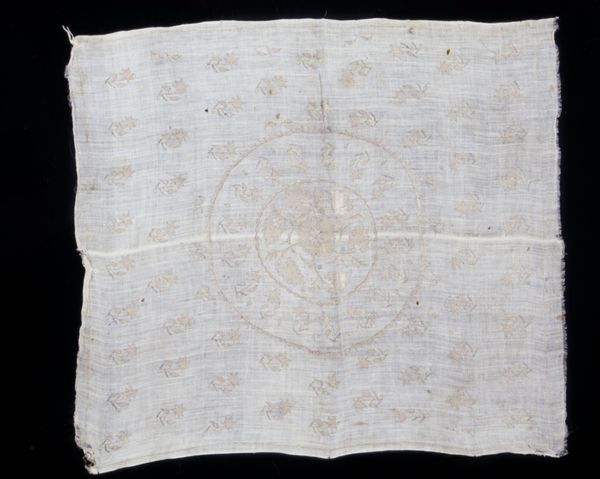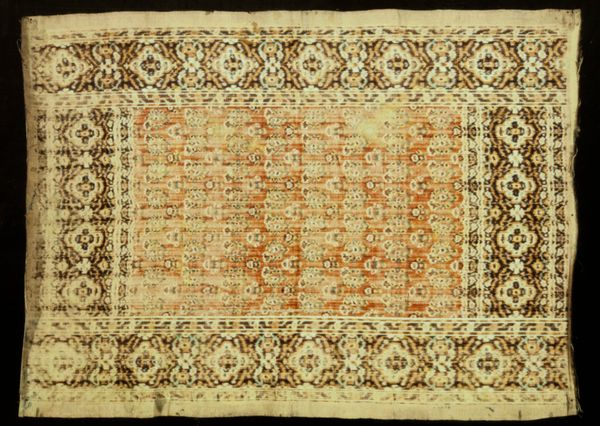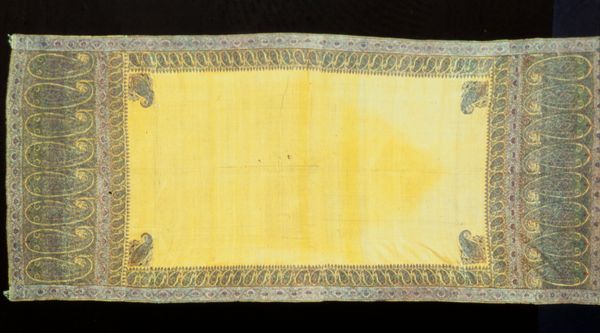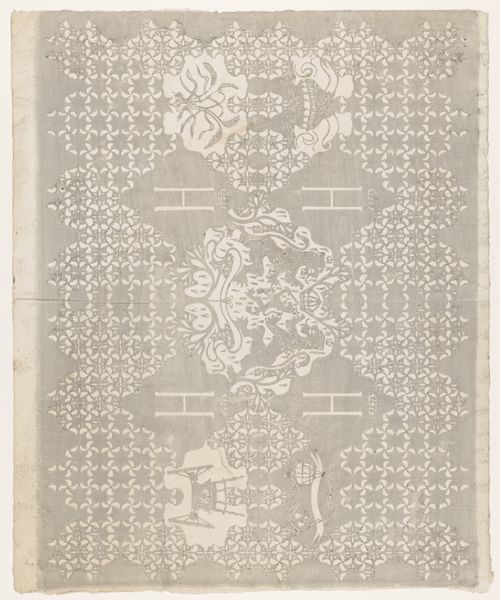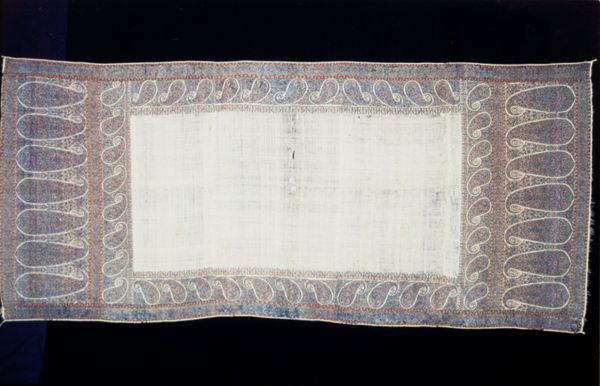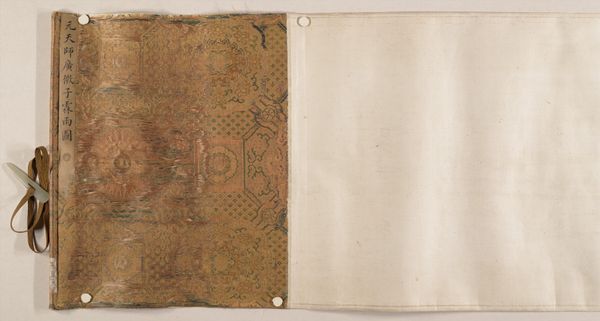
textile
medieval
textile
medieval-art
Dimensions: Overall: 47 1/2 x 156 in. (120.7 x 396.2 cm) Storage (Rolled and boxed): 9 3/4 × 75 1/4 × 11 in. (24.8 × 191.1 × 27.9 cm)
Copyright: Public Domain
Editor: We're looking at an Altarcloth, a textile from between 1350 and 1399 by Sophia, Hadewigis, and Lucardis. It’s currently at the Metropolitan Museum of Art. I'm struck by how faded and fragile it appears, and it makes me wonder about the hands that created and used it. What do you see when you look at this textile? Curator: I see a potent symbol of power, but not just ecclesiastical power. It’s easy to focus on the religious aspect, given its function, but I'm more interested in the intersectionality of faith and female agency at play here. Consider: a piece commissioned for religious ritual, intricately crafted, bearing the names of women, positioning them within the religious economy. What does this suggest to you? Editor: That's interesting. I hadn't thought of it like that. So, it’s less about the scene depicted, and more about the identities of the women who made it? Curator: Precisely. It urges us to question the narrative surrounding women's roles in medieval society. The dominant view often overlooks female agency, positioning women as passive. Yet, here we have tangible evidence challenging that assumption. Who were Sophia, Hadewigis, and Lucardis? What social and economic forces empowered them to create this altar cloth? What can it teach us about other obscured historical figures? Editor: That completely shifts my perspective. It transforms from a simple, albeit old, piece of cloth into a powerful statement about female participation and perhaps even influence within the church during that period. Curator: Exactly. Art history must engage with critical theory to dismantle ingrained patriarchal assumptions. Otherwise, we risk perpetuating historical inaccuracies. This piece should open conversations about the intersections of craft, gender, and religious identity. Editor: I’m definitely going to look at other pieces from this period with new eyes. Thanks for making me think more deeply about historical and social context. Curator: The pleasure was all mine. I find that teaching and learning about art is most fulfilling when exploring how artworks speak to power dynamics.
Comments
No comments
Be the first to comment and join the conversation on the ultimate creative platform.
